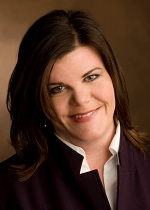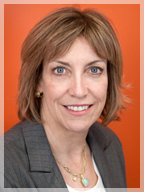Orphan drugs are not alone anymore. Booming interest in R&D for drugs to treat rare diseases resulted in a record 440+ requests submitted to the FDA last year, with almost 300 designations granted and 48 approved--both also records. Then there are the M&A deals fueled by orphan meds, as major drugmakers snap up smaller drug developers to gain a foothold in the field.
 |
| Siren Interactive CEO Wendy White |
More orphan drug approvals means more rare-disease drugs to market--and it's not your average pharma marketing task, as Big Pharma companies are realizing. Promoting orphan drugs is completely different from their usual go-to-market approach, said Wendy White, founder and CEO of Siren Interactive, a marketing agency that specializes in rare diseases.
Mass media campaigns and traditional detailing to doctors won't work. Even the way large pharmas are organized--with many different internal groups--isn't conducive to developing the direct-to-patient and -caregiver connections needed in rare disease marketing, White said. So, some Big Pharmas are carving out specialized groups internally to handle orphan drugs differently.
 |
| Flashpoint Medica CEO Charlene Prounis |
Charlene Prounis, CEO of healthcare communications agency Flashpoint Medica, said the key in rare disease marketing is education, directed both at patients and physicians, who need to know how to recognize symptoms for what they are. The average journey to a rare-disease diagnosis lasts more than 5 years and includes two or three misdiagnoses along the way, according to a recent Shire ($SHPG) study.
There's some good news for drugmakers in here: It's a receptive audience. Frustrated patients, and especially their caregivers--50% of rare disease patients are children--are actively seeking information and treatments, and they readily accept pharma as part of the process. But that doesn't necessarily mean pharma can sit back and wait until their educational and support materials are found.
Actually, info from drugmakers might help cut time to diagnosis or circumvent missteps. Creating awareness-oriented and educational--read nonbranded--websites, and then promoting them through search or banners, can get the word out broadly. To hit physicians, digital "know the signs and symptoms" materials, marketed on websites that doctors frequent.
Then, once a patient opts in, the best value comes from building and facilitating community. Think about it, if only a few hundred--or just a few dozen people--have the same disease, linking to them for information and support only makes sense. Participating in annual meetings of advocacy groups, working with foundations, experts and key opinion leaders and developing a patient registry to track treatments and outcomes are all specialized marketing strategies orphan drug makers should be pursuing, Prounis said.
White said, "It's a 100% pull marketing strategy. You know they're empowered and they're looking for you. … It's important (for pharma) to play the right role so that they're transparent about who they are and communicate in a very authentic way."
- here's the Flashpoint Medica article (PDF)
- and the Shire release
- get more from EvaluatePharma (PDF)
Special Report: Top 20 orphan drugs by 2018